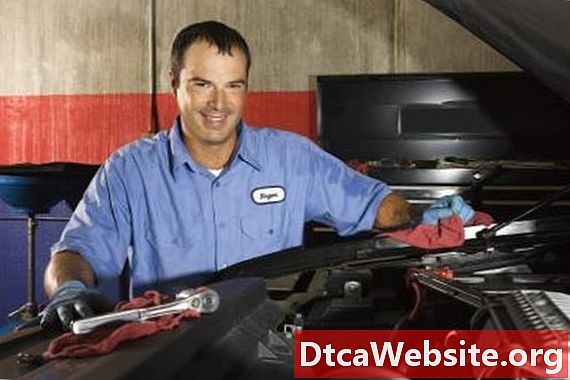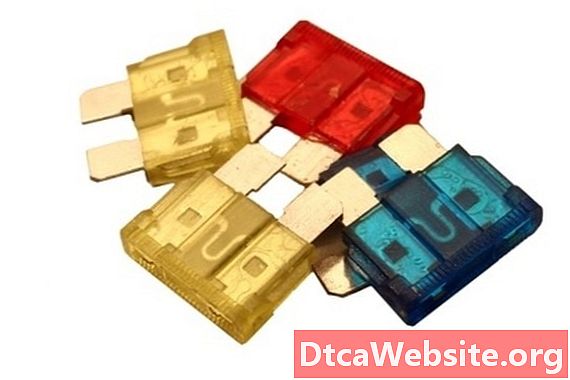
Contenu

The fuel system in your car includes, among other components, a fuel pump, a rail that carries the fuel to the engine and a fuel pressure regulator. A problem with any part of the system can cause your vehicle to run irregularly or not run at all. Testing the fuel pressure regulator is a simple task that requires some minor equipment and a short amount of time. It does not require a mechanic.
Fuel Pressure Symptoms
Suspect a problem with your fuel pressure regulator if your vehicle’s engine is running rough, the engine sputters or stalls while driving or if you notice considerably worse fuel mileage suddenly, according to Clarks-Garage.com. With the car in "Park," press the gas pedal to rev the engine and notice if black smoke is coming from the exhaust. This could also indicate fuel pressure problems. If your fuel pump makes unusual noises when you turn the key on or if the engine will not start at all, you should test your fuel system to diagnose the problem.
Fuel Pressure Gauge
Buy a fuel pressure gauge at your local auto parts store and test the pressure of your fuel system to rule out problems with the line or the pump itself. Find the pressure testing port on the fuel rail and unscrew the cap. Screw the gauge onto the test port and then open the feed to the gauge. You will see the gauge needle jump up to show the psi (pounds per square inch) of your fuel system. Check your manual to see if the reading is right for your car. If it is not, you may have a problem with the fuel pump or a clogged fuel line. Proceed to a fuel pressure regulator test if the reading appears to be correct.
Testing the Fuel Pressure Regulator
Locate the fuel pressure regulator on the rail; find the vacuum hose attached to the regulator and remove it with your hand. There should not be any fuel dripping from the hose. If there is fuel in the line, your regulator may have a problem. Put the vacuum hose back on the regulator. Start the engine with your pressure gauge still attached. Look at the gauge and note the pressure reading. Remove the vacuum hose again while looking at the gauge. The psi should jump by five to 10 psi. If the needle on the gauge does not move when you remove the vacuum hose, it means your pressure regulator is faulty and you should have it replaced, according to 2CarPros.com.


